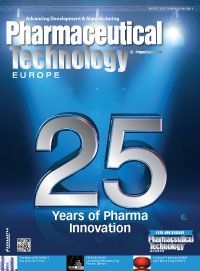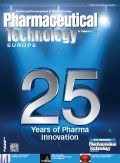Innovations and Future Trends in HPLC Column Technology
Pharmaceutical Technology Europe
Developments in chromatography column technology to deliver greater efficiency, speed and inertness benefit the drug development process from discovery to manufacturing and quality control.

From QC to QbD and Beyond
Analytical technologies and bio/pharmaceutical process developmenthave advanced in parallel through necessity and innovation.
An average high performance liquid chromatography (HPLC) instrument uses 6-8 columns per year; as the number of instruments grows, so does the market for columns. The overall market for columns (analytical, preparative/process, capillary/nano, bulk packing, and accessories) is now estimated to be $1.3 billion with an overall growth of 3.5% (1). Growth in the high performance liquid chromatography (UHPLC) segment is higher. Developments in column technology to deliver greater efficiency, speed and inertness benefit the drug development process from discovery to manufacturing and quality control.

Pharmaceutical Technology Europe25th Anniversary Issue
For new methods, superficially porous particle (SPP) columns have become the favoured column type in pharmaceutical laboratories thanks to the lower pressure, enhanced efficiency and equal loadability offered in comparison to smaller totally porous particles. The development of even smaller SPP particles can also be anticipated. If SPP columns continue to dominate, the need to further increase instrument pressure limits may not be necessary, but in chromatography, pressure is always a useful commodity.
If researchers are able to improve efficiency without great increases in backpressure and can make longer length columns for difficult separations, monolithic columns will still have great promise. In particular, polymeric monoliths could be quite attractive because their wider operating range gives them some advantages. Monoliths may become the favoured approach for laboratory-on-a-chip systems since they can be synthesized in situ inside the narrow channels where efficient packing of particulates may prove exceedingly difficult.
With its orthogonal separation power, supercritical-fluid chromatography (SFC) has made a comeback in the rapid analysis of small pharmaceutical compounds. Initially, SFC made its contributions in the preparative arena for chiral drugs but now has been applied to more general small molecule applications. For many separations, SFC can be superior to HPLC/UHPLC, especially in the speed of analysis. The phases used for SFC are different than those used for liquid chromatography so additional polar phases are required to exploit this technology.
The trend in the use of monoclonal antibodies and peptide-based compounds in drug development requires columns capable of providing high recovery separations of biologically derived compounds, oligonucleotides and biosimilars, both neat and in biological fluids. Column manufacturers are already responding with biocompatible columns that provide more selective separations with higher recovery.
Reference
1. SDi, Global Assessment Report, 2012-2016, (Los Angeles, October 2012).

About the Author
Ron Majors is a senior scientist consultant for Agilent Technologies.

Drug Solutions Podcast: Applying Appropriate Analytics to Drug Development
March 26th 2024In this episode of the Drug Solutions Podcast, Jan Bekker, Vice President of Business Development, Commercial and Technical Operations at BioCina, discusses the latest analytical tools and their applications in the drug development market.
Pharmaceutical Tariffs Are Imminent: How Industry is Bracing for Impact
April 16th 2025On April 14, 2025, the Trump Administration launched a national security-driven investigation into pharmaceuticals, a move that will likely result in tariffs being placed on pharmaceutical drugs, ingredients, and other components that are imported from outside of the United States.